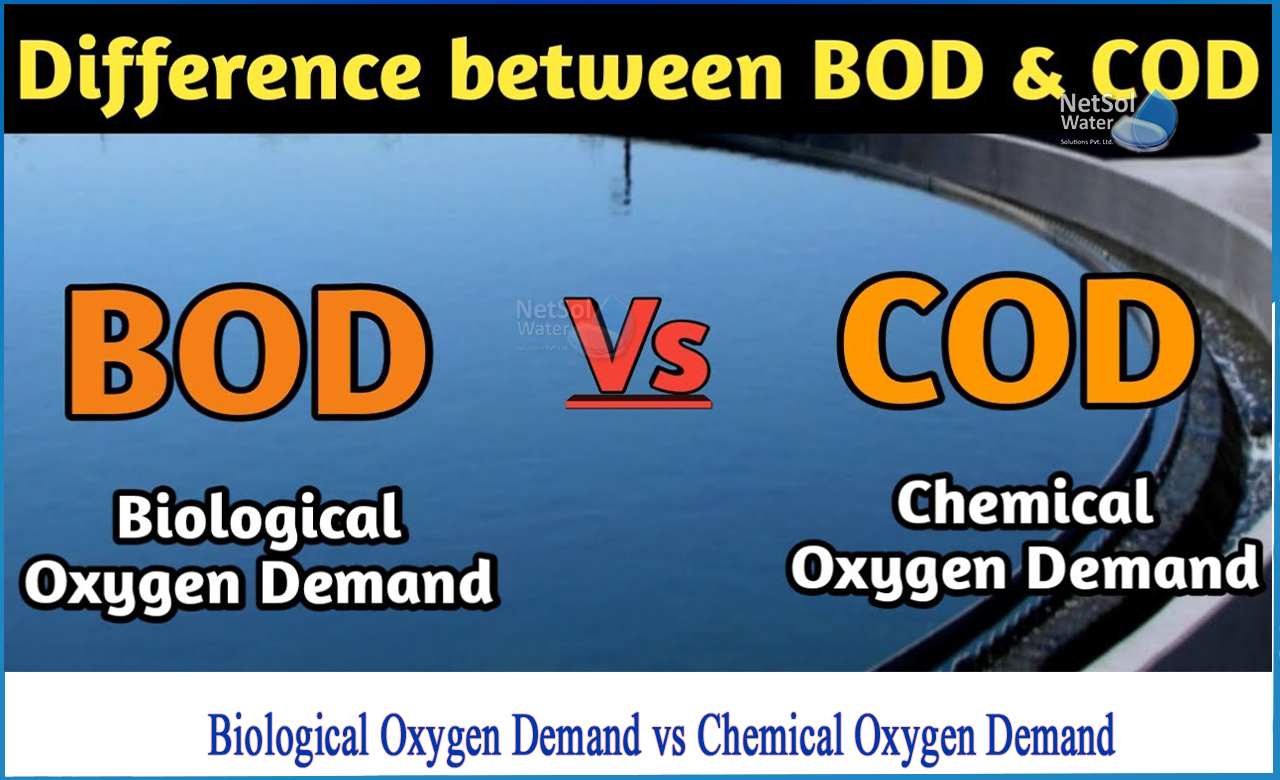Difference between BOD and COD?
The biological oxygen demand is referred to as BOD, and the chemical oxygen demand is referred to as COD.
The fundamental distinction between BOD and COD is that BOD refers to the quantity of oxygen consumed by bacteria during the aerobic decomposition of organic matter, whereas COD refers to the amount of oxygen necessary for the chemical oxidation of total organic matter in water.
Although COD and BOD have a high association, COD analysis is a considerably faster and more precise approach.When unclean water including bacteria and organic debris is dumped into a stream or lake, a BOD analysis is performed to see what effect it will have on animal and plant life. To break down the organic materials (pollution) in the water, bacteria will need to take in oxygen. The test determines whether incoming water has the ability to decrease the oxygen in receiving waters due to bacterial activity.
The presence of large levels of organic waste and bacteria in the water will have a negative impact on the ecology. Because there are fewer bacteria and less organic waste, the BOD will be lower and the dissolved oxygen levels will be higher. After five days of incubation at 20°C, the BOD test comprises taking an initial dissolved oxygen (DO) reading and a second reading.
COD analysis, on the other hand, is a measurement of an organic waste-contaminated water sample's oxygen-depletion capability. It calculates the equivalent quantity of oxygen needed to chemically oxidise organic molecules in water and thereby remove pollution. COD is an important component of all water quality management plans.
Differences in short terms:
1-Definition
BOD stands for the amount of oxygen required by bacteria during the aerobic decomposition of organic materials.
COD stands for the quantity of oxygen needed to oxidise total organic matter in water.
2-Decomposition
BOD is a term that refers to a biological oxidation process.
COD stands for Chemical Oxidation Degradation.
3-Test Technique
Method 5210B is a popular BOD test method.
Method 410.4 is the most commonly used COD method.
4-Test Procedure
BOD is calculated by incubating a sealed water sample at a certain temperature for five days and measuring the loss of oxygen from the start of the test.
COD is evaluated by incubating a closed water sample for a set period of time with a strong oxidant such as potassium dichromate (K2Cr2O7) in combination with boiling sulphuric acid (H2SO4) at a specific temperature.
5-Determination time
BOD: The BOD is determined over the course of five days.
COD: COD can be measured within hours.
6-Permissible Limit of Test
BOD Test Permissible Limit: BOD has a permissible limit of 30 mg/L.
COD: The allowable limit for COD is 250 to 500 parts per million (ppm).
7-Measurement Values
BOD: The value of BOD is lower than the value of COD.
COD: The COD value always exceeds the BOD value. As a result, the more organic material that can be oxidised by COD, the better.
8-Ability to Oxidize
Biological oxidation (BOD) can oxidise natural organic debris and organic waste in water.
COD is the sole thing that degrades industrial sewage. However, COD does not account for acetate's oxygen consumption.
Conclusion:
To determine the level of contamination in wastewater, BOD and COD measurements are done. The COD value of a water body is always higher than the BOD value. The oxygen demand for the breakdown of organic matter is measured by BOD.
For more information, contact Netsol Water.
Netsol Water is Greater Noida-based leading water & wastewater treatment plant manufacturer. We are industry's most demanding company based on client review and work quality. We are known as best commercial RO plant manufacturers, industrial RO plant manufacturer, sewage treatment plant manufacturer, Water Softener Plant Manufacturers and effluent treatment plant manufacturers. Apart from this 24x7 customer support is our USP. Call on +91-9650608473, or write us at enquiry@netsolwater.com for any support, inquiry or product-purchase related query.



